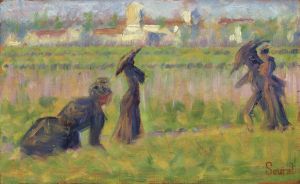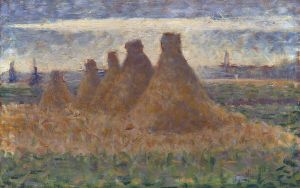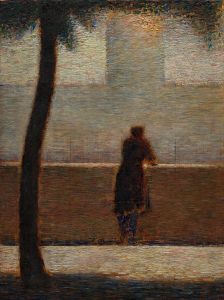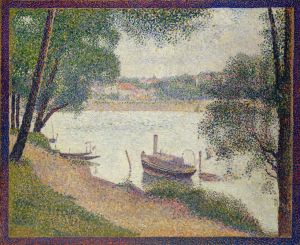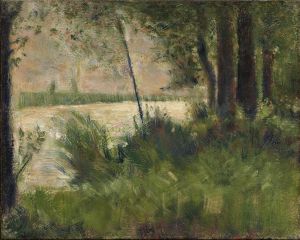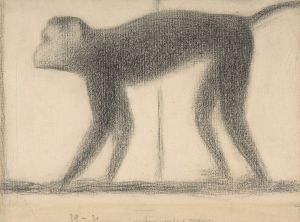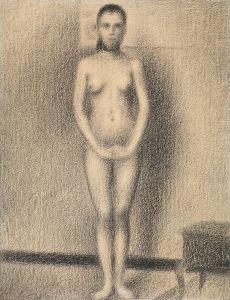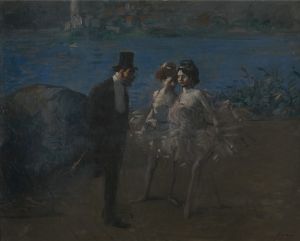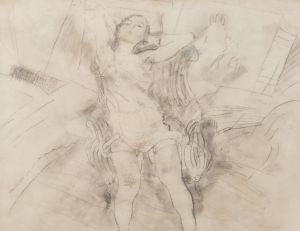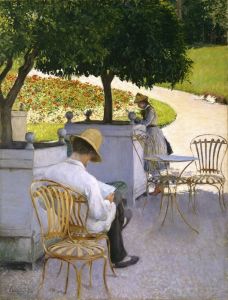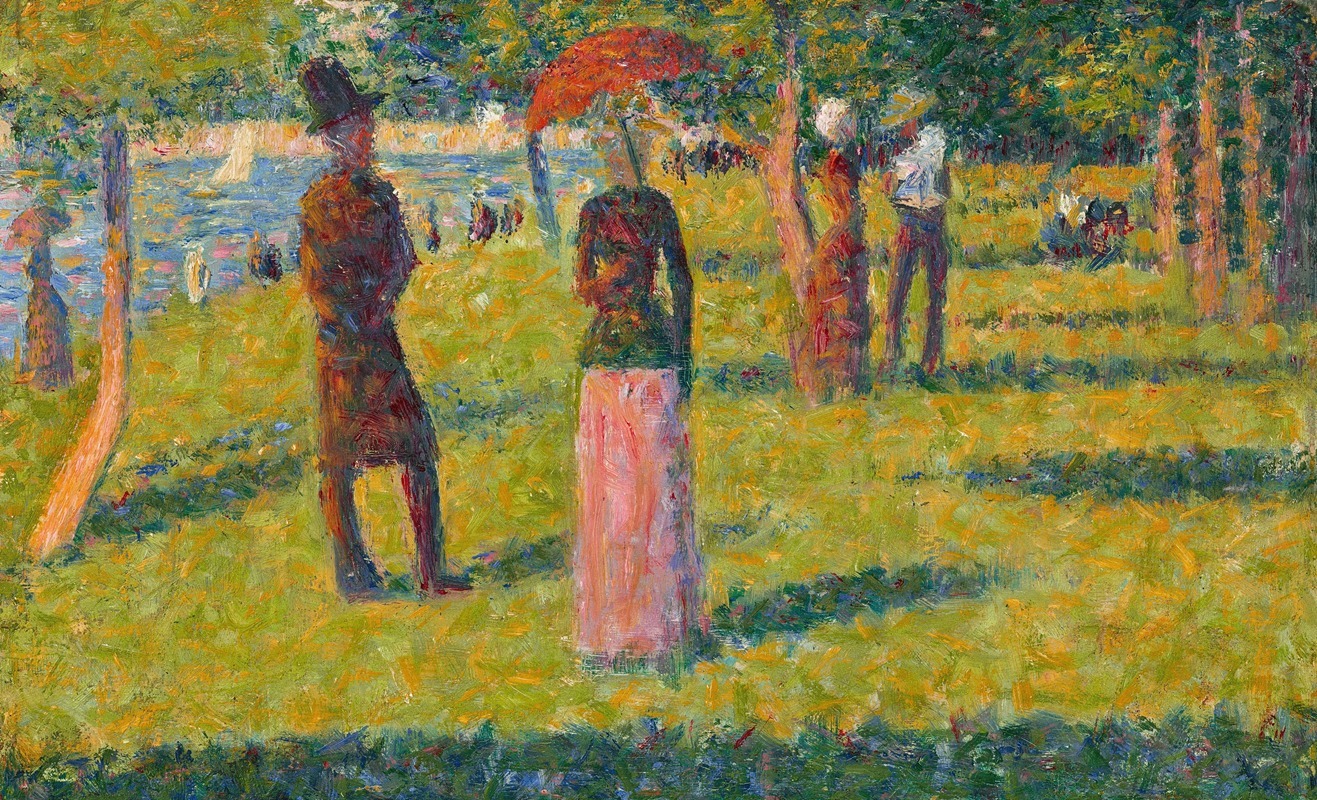
Paysage et personnages
A hand-painted replica of Georges Seurat’s masterpiece Paysage et personnages, meticulously crafted by professional artists to capture the true essence of the original. Each piece is created with museum-quality canvas and rare mineral pigments, carefully painted by experienced artists with delicate brushstrokes and rich, layered colors to perfectly recreate the texture of the original artwork. Unlike machine-printed reproductions, this hand-painted version brings the painting to life, infused with the artist’s emotions and skill in every stroke. Whether for personal collection or home decoration, it instantly elevates the artistic atmosphere of any space.
Georges Seurat, a pioneering French post-Impressionist artist, is best known for developing the technique known as pointillism, a method of painting in which small, distinct dots of color are applied in patterns to form an image. One of his lesser-known works is "Paysage et personnages," which translates to "Landscape and Figures." This painting exemplifies Seurat's innovative approach to capturing light and color through meticulous application of paint.
"Paysage et personnages" was created during a period when Seurat was deeply engaged in exploring the scientific principles of color and optics. His work was heavily influenced by contemporary theories of color perception, particularly those of Michel Eugène Chevreul and Ogden Rood. These theories posited that colors could be mixed optically rather than physically, allowing the viewer's eye to blend the colors at a distance. This scientific approach to art was a hallmark of Seurat's style and is evident in "Paysage et personnages."
The painting features a serene landscape, populated with figures that are integrated into the natural setting. Seurat's use of pointillism in this work demonstrates his skill in creating depth and texture, as well as his ability to convey the subtleties of light and shadow. The figures in the painting are depicted with the same attention to detail as the landscape, highlighting Seurat's interest in the harmony between humans and their environment.
Seurat's technique in "Paysage et personnages" involves the application of tiny dots of pure color, which, when viewed from a distance, blend to form a cohesive image. This method not only enhances the vibrancy of the colors but also creates a shimmering effect that captures the transient qualities of light. The painting's composition reflects Seurat's interest in classical balance and order, with carefully arranged elements that guide the viewer's eye through the scene.
The figures in "Paysage et personnages" are rendered with a sense of anonymity, a common feature in Seurat's work. This anonymity allows the viewer to focus on the overall composition and the interplay of colors and forms, rather than on individual identities. The painting's mood is contemplative, inviting viewers to reflect on the relationship between people and nature.
"Paysage et personnages" is a testament to Seurat's dedication to his craft and his relentless pursuit of new ways to express visual reality. Although not as famous as his masterpiece "A Sunday Afternoon on the Island of La Grande Jatte," this painting is an important part of Seurat's oeuvre, showcasing his innovative techniques and his contribution to the development of modern art.
Seurat's work, including "Paysage et personnages," had a significant impact on the art world, influencing subsequent movements such as Fauvism and Cubism. His exploration of color theory and his methodical approach to painting laid the groundwork for future artists to experiment with new techniques and ideas. Today, Seurat is celebrated as a visionary artist whose work continues to inspire and challenge perceptions of art and color.









